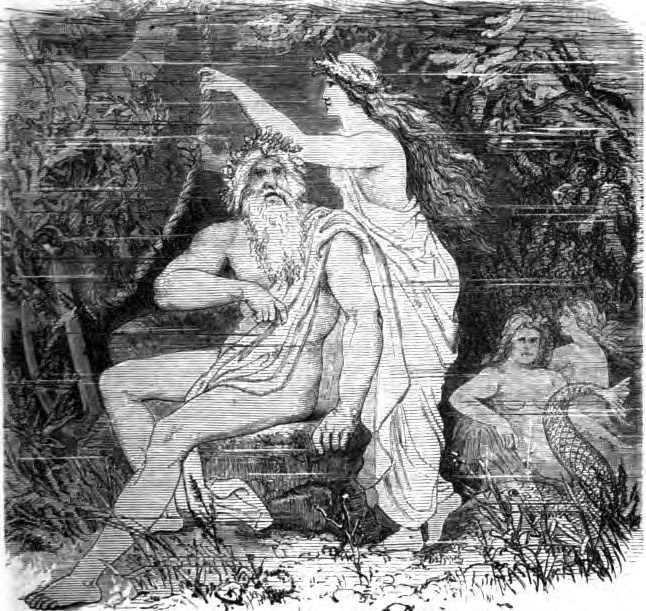Introduction to Norse Mythology
Norse mythology captivates with its rich tapestry of gods, giants, and magical creatures narrating the lore of ancient Scandinavia. These stories, handed down through generations, were much more than mere tales. They explained natural phenomena, taught moral lessons, and provided entertainment during the long, cold winters. The Norse deities were complex, with human-like emotions and flaws, making their stories relatable. Among them, sea deities like Rán and Ægir played pivotal roles, reflecting the Vikings’ deep connection with the ocean, a vital source of sustenance and a pathway to exploration and trade.
Get your dose of History via Email
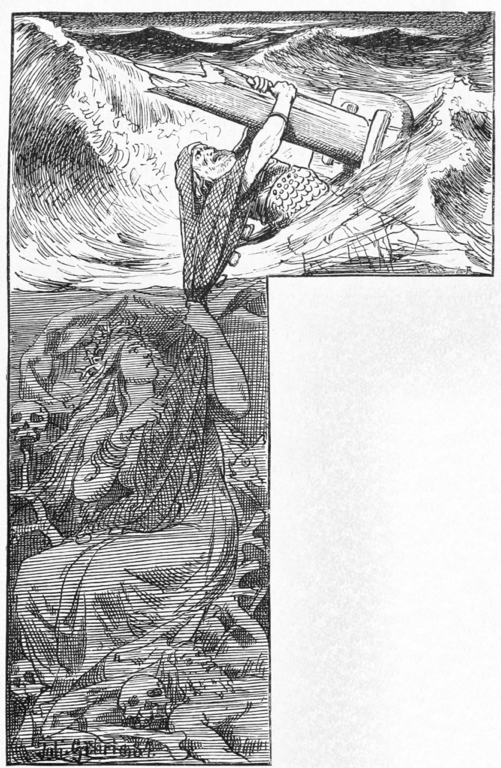
Importance of Sea Deities like Rán and Ægir in Norse Beliefs
Rán and Ægir, the divine couple of the ocean depths, were central to the Norse people’s understanding of the sea’s fearsome and generous natures. Rán, the sea goddess, represents the treacherous and capricious side of the ocean. She was known to capture sailors with her net and drag them down to dwell in her watery hall. Her consort, Ægir, the god of the sea, embodies the more benign aspects. He was associated with calm seas and was revered for his ability to create frothy ales for the gods’ feasts. Together, Rán and Ægir’s tales are crucial to the Norse mythology narrative, offering insights into how the Norsemen viewed the unpredictable sea that was so central to their life and livelihood.
Mythological Background of Rán
In Norse mythology, Rán, the sea goddess, is a figure shrouded in the enigma of the ocean depths. She is the wife of Ægir and together, they represent the sea’s dual nature. Rán is often depicted as enchanting but dangerous, embodying the perilous and unpredictable nature of sea voyages. She commanded respect and even fear, as she held the power to claim lives with her nets. These nets were used to capture the souls of drowning sailors, drawing them into her underwater realm. Her domain beneath the waves was an inevitable and sometimes ominous destination for those traveling by sea.
Rán’s Role and Attributes in Norse Lore
Rán’s attributes and role in Norse lore are deeply intertwined with the Vikings’ maritime life. She was not only feared but also respected, as the sea was both a giver of wealth and a bringer of doom. Rán’s image is that of a controller of destinies, with her net symbolizing the inevitable entrapment that awaited those who perished at sea. It is said that sailors would offer Rán gold coins before their voyages, hoping to appease her and find safe passage across her vast, treacherous waters. Despite her fearsome reputation, there was also a sense of awe surrounding her persona – a deity who was integral to the Norse understanding of life, death, and the forces of nature.
The Significance of Rán in Viking Culture
The significance of Rán in Viking culture cannot be overstated. The sea was central to Norse society – for travel, trade, and sustenance – and Rán personified its might and mystery. Through her, we can glimpse the profound respect the Vikings had for the sea, seeing it as a living entity with its own consciousness and moods. Understanding and appeasing Rán was vital for the well-being and success of Norse seafarers. Her presence in myths and sagas served as a constant reminder of the power and caprice of the sea, an element that could either bless the Vikings with prosperity or curse them with a watery grave. Rán’s enduring legacy in Norse mythology reflects the deep connection between the Vikings and the marine world that was an intrinsic part of their daily lives.
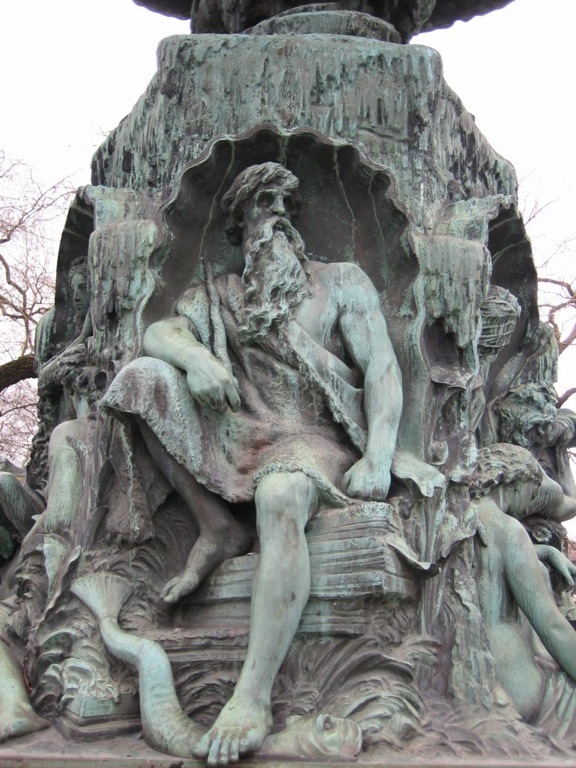
Understanding Ægir’s Place in Norse Mythology
Ægir, renowned as the god of the sea in Norse mythology, held a place of awe and reverence among the Norse people. His realm is the ocean’s expanse, with a character calmer and more personable than that of his consort Rán. Amid the vast mythology, Ægir is a symbol of the ocean’s benevolent aspects—its nourishing bounty and tranquil waters. His power extended over the waves and the life within them, marking him as a crucial deity for seafaring Vikings. He was seen as a friendlier face of the sea, one who invited the gods to his underwater halls for sumptuous feasts, providing hospitality amid the mysteries of the deep.
Ægir’s Characteristics and Powers
Ægir’s characteristics and powers mirror the sea’s dual nature, capable of nurturing and devastation. Unlike his wife Rán, Ægir was seldom associated with the dangers of the ocean. Instead, his powers encompassed the creation of beer from the waves and the provisioning of spectacular feasts. In lore, his hall beneath the waves is a place of festivity and camaraderie among the gods. Ægir showcases a mastery over brewing, an art form celebrated by the gods and symbolic of friendship and cultural gatherings. He is also a god of wealth, as the sea brought riches to those who navigated its domain successfully.
The Relationship between Ægir and Other Norse Deities
The relationship between Ægir and other Norse deities reflects the intricate web of Norse myth. As a host to the gods, he is connected to many, including Loki and Thor. While his gatherings were grand, they were not without tension, highlighted by the sharp wit and biting commentary exchanged, particularly involving Loki. These interactions highlight the gods’ complex relationships, revealing hierarchies and social dynamics that bring humanity to these divine figures. Ægir’s interactions with other deities solidify his role as both a neutral ground and connector among the often volatile pantheon of Norse gods. His ability to bring the gods together, even in troubled times, elevates his importance within Norse mythology.
The Marriage of Rán and Ægir
The marriage between Rán and Ægir represents the meeting of two formidable forces of the sea, the dangerous and the benign. Rán, with her capturing nets, and Ægir, governing the calmer waters, together they illustrate a complete picture of the sea’s character in Norse beliefs. Their union is an acknowledgment of the ocean’s complexities, both life-giving and treacherous. Norse seafarers would have grasped the importance of this duality, seeking Rán’s mercy and Ægir’s favor before embarking on their voyages.
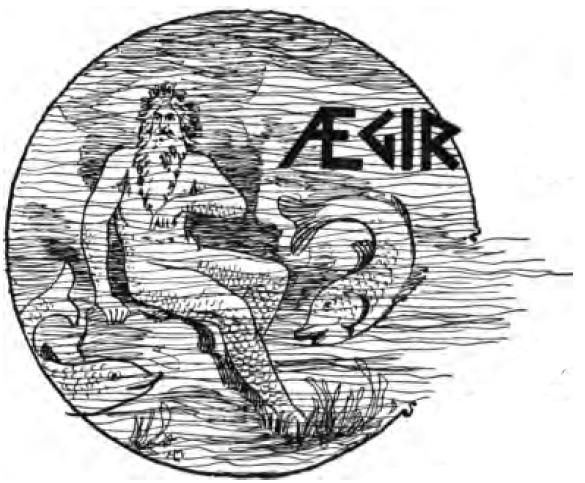
Their Joint Influence on Seafarers and Mythology
The joint influence of Rán and Ægir on mythology and seafarers is profound. Vikings, who spent much of their lives on the water, saw the sea gods’ moods in every journey. They looked to Rán and Ægir to explain the unpredictable sea storms and serene passages. Stories of the deities offered not only understanding but also a sense of control over the formidable sea that was central to Norse existence.
Depictions of Rán and Ægir in Ancient and Modern Culture
Rán and Ægir have been depicted in various ways through ancient to modern culture, showcasing the lasting impact of these deities. Initially portrayed in carvings and texts, today they make appearances in books, films, and games. They often symbolize the enduring fascination with the sea’s might and mystery.
Water as a Symbol in Norse Myths
In Norse mythology, water symbolizes life, death, and rebirth. It’s a source of nourishment but also represents the unknown. As deities of water, Rán and Ægir embody these dichotomies. They remind us of the sea’s duality in providing for and taking away from Norse society.
Rán and Ægir in Art and Literature
Historically, Rán and Ægir have inspired art and literature, their tales depicted in grand visuals and woven into poetry. In modern times, these characters continue to capture the imagination, appearing across various media, enriching contemporary storytelling with their mythic legacy.
The Lasting Impact of Rán and Ægir on Norse Mythology
Rán and Ægir have left a lasting legacy within Norse mythology, embodying the volatile and nurturing nature of the sea that was pivotal to the Vikings’ way of life. Their stories have lived through time, showcasing the intricate relationship humanity has with the forces of nature. These deities symbolize respect, fear, and the need for harmony with the environment. As such, they continue to play a vital role in understanding Norse cultural heritage and the ancestral worldview of the sea’s power over life and death.
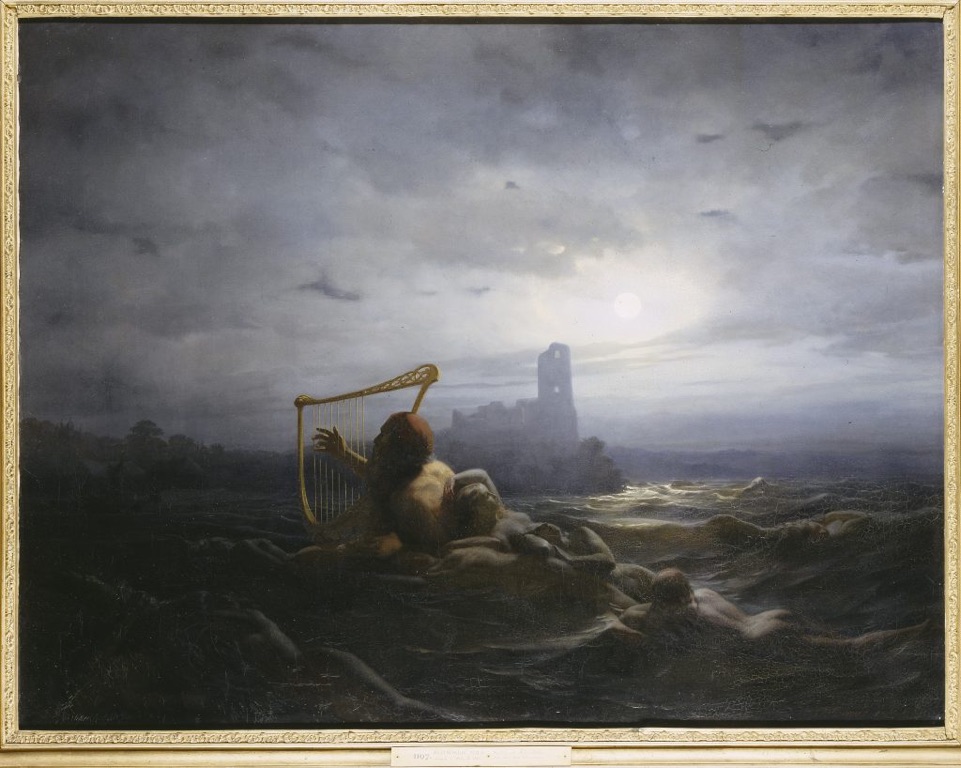
Reflection on the Cultural Significance of Sea Deities in Norse Lore
Reflecting on the cultural significance of sea deities in Norse mythology highlights their integral part in shaping the Norse’s understanding of the world. Figures like Rán and Ægir served to make sense of the unpredictable sea and its impact on human fate. They encapsulated the awe and apprehension of seafaring folk, representing the essence of a civilization for whom the sea was both a fearsome opponent and a generous friend. In today’s world, the tales of Rán and Ægir continue to strike a chord, weaving the ancient connection with nature into our collective narrative.
For further reading and to validate the information presented in this article, the following sources are recommended:

